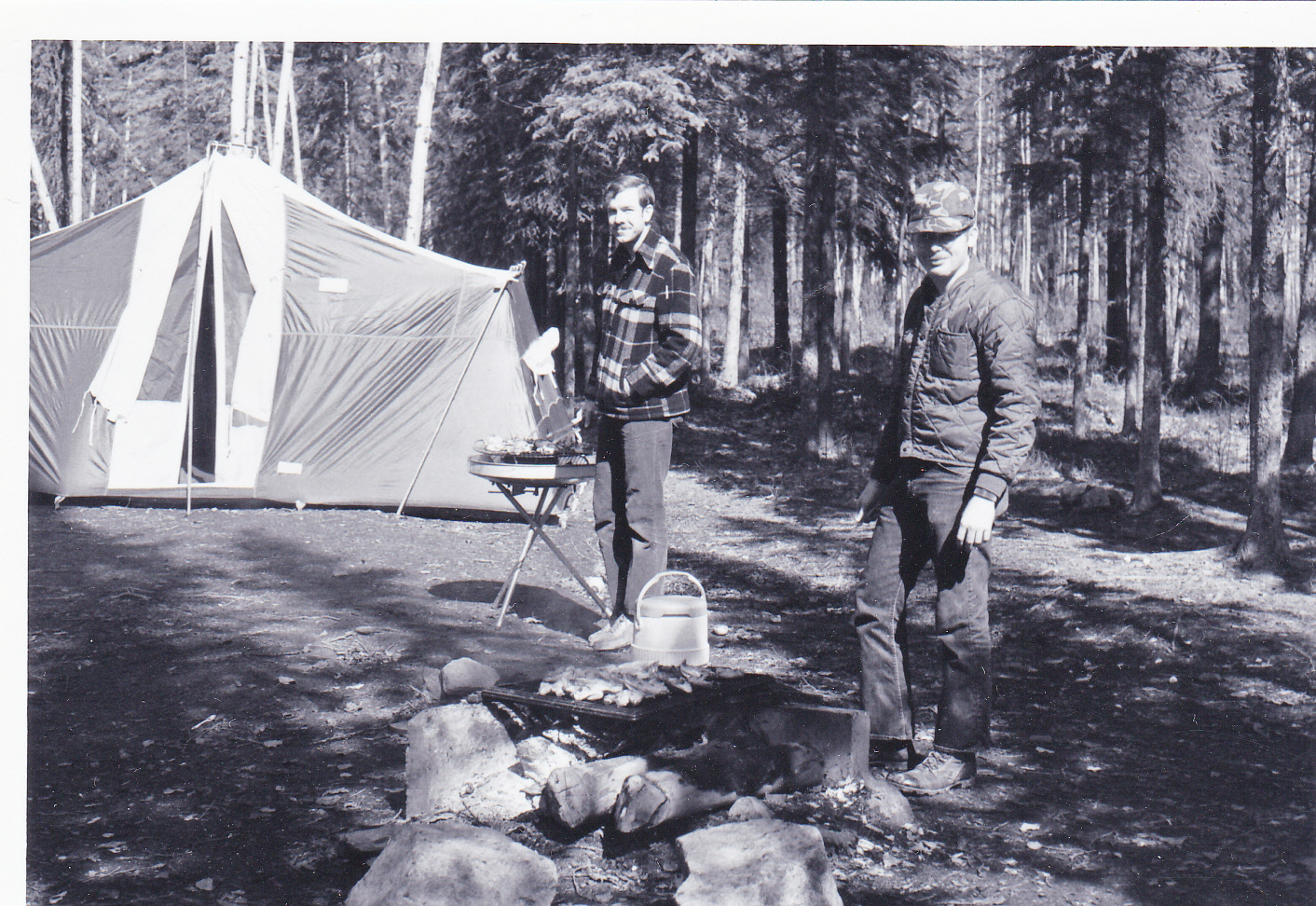
 |
|
| James Alan "Al" Moyers and Steve Shrum Camping behind Eielson AFB |
The 70s were a time of what we then considered to be technological nirvana. Personal computers with microprocessors were just getting started, although, initially, they only came in kit form. Electronic games became the rage (Pong!) and you could buy them as handhelds. LED watches and digital cameras were coming on the market, and Citizens' Band (CB) radios were becoming ubiquitous due to changes in the FCC regulations that rescinded Morse code requirements and opened up over a dozen frequencies. We didn't have cell phones in those days, but we had CB radios! What fun they were; besides, they were often indispensable when traveling in Alaska's harsh and unforgiving interior.
Al Moyers, handle Wind Jammer (a play on his initials JAM); Steve Shrum, handle forgotten - maybe Fond du Lac; and Harry Swanson, handle Kenai Crab (no doubt a reflection of his love for fishing on the Kenai Peninsula) all had them and used them at every opportunity, with no excuse needed. Whenever they traveled in trail, they fired up the CBs and began chatting.
"Kenai Crab this is Wind Jammer. Read you five by five good buddy. What you got on, your mind?"
"Wind Jammer. Wonderin' what the weather is like up there."
Wind Jammer was no more than 200 yards ahead, and both of these intrepid CBers were headed to eat Prime Rib at Club 11, a famous restaurant that one could walk to from Kenai Crab's Moose Creek home. Yes, they used their CBs whenever and wherever they could, usually on channel 6 after initial callup on channel 19, necessary or not.
Late one evening, Wind Jammer and Kenai Crab were traveling in the hills outside of Eielson AFB, probably returning from a fishing or camping trip, and were blowing smoke on their CBs. On that trip, they were being "stepped on" by some half-garbled outsider shouting over their "personal channel 6." Often, especially at night, channel 6 was prone to lots of background noise and communications fading in and out. Evening atmospheric and ionospheric conditions made for long distance communications, which was usually desirable, but it also necessitated use of a heavy hand with the squelch knob.
"KDV-7300, Kenai Crab to unknown caller. Say man, you are hammering us bad. Please pay attention to others talking, over."
"Kenai Crab, this is Rogue River Bandit. I'm in need of assistance. What's your 20? Over."
"Rogue River Bandit, Kenai Crab. We're just outside of Eielson AFB. What's your emergency?"
"Kenai, Bandit. Where's Eielson AFB? I've fallen and broken my leg and need help. I'm on the Cascade Lakes Trail about a mile up from the starting point at Bend. Over."
"Bandit, did you say Cascade Lakes? Is that Bend, Oregon?! Over"
"Roger that Kenai. Can you come get me or send help? Over"
"Rogue River Bandit, this is Wind Jammer. Kenai Crab and I are traveling in Interior Alaska. Repeat, Interior Alaska. Rest easy. We'll call somebody and get back to you. Over"
As you can imagine, it took considerable time and many call outs, using many CB channels to make the proper connections. Signal readability was in and out, mostly out. Much repetition and patience was required. (Sound anything like work?) Finally, we did it. Someone got in touch with an Oregon rescue unit in Bend, Oregon, they got in touch with Rogue River Bandit, and we know from later communications that they rescued the guy. (Our communications with him faded out before we could finish the job. Again, sound like work?)
Some weeks later, Wind Jammer and Kenai Crab got a nice letter of appreciation from an Oregon State Parks and Recreation office out of Bend, Oregon. Apparently, they had some responsibility for the Cascade Lakes Trail. Unusual propagation and CB radio saved the day!
The 6985th had come through again! Airborne Analysts had helped save someone's ass! (Repeat: Sound like work?)